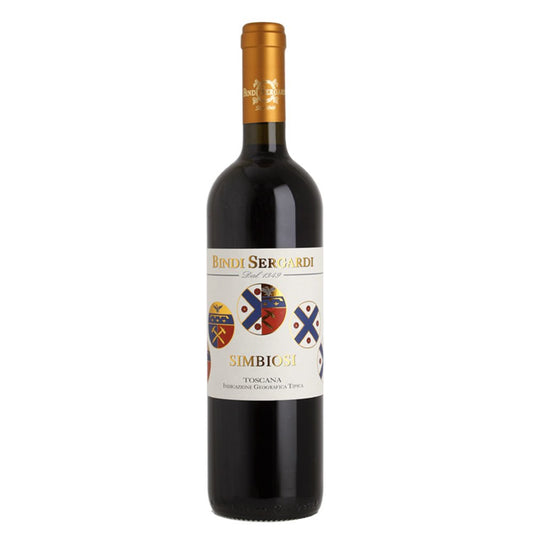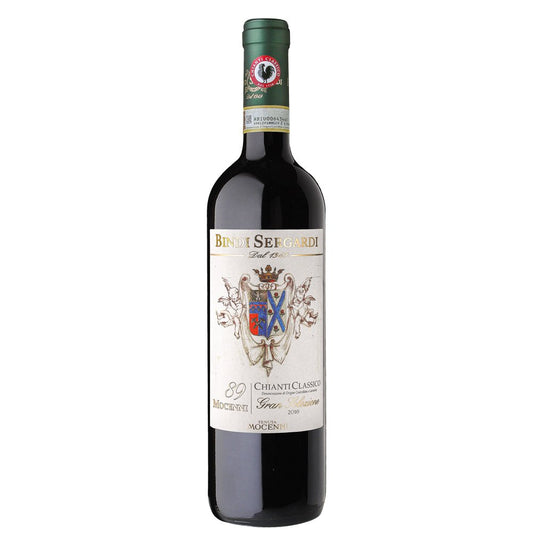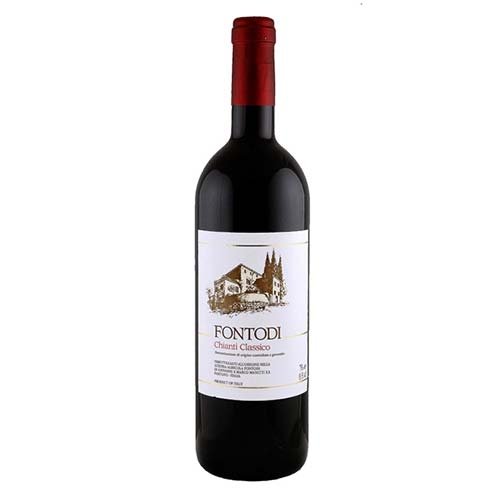What kind of wine is Sangiovese?
Sangiovese is one of the most important Italian red grape varieties, widespread throughout central Italy, especially in Romagna, Tuscany and Umbria, where it is the basis for wines such as Brunello di Montalcino, Chianti Classico and Rosso di Montefalco.
It is a long-lived grape variety, very robust and particularly suited to clayey, calcareous and dry soils; it cannot tolerate excessively cold temperatures and therefore northern climates, but thrives in warm areas and coastal regions. This is why the Tuscan Maremma is the ideal location and home of choice for its cultivation.
It is the most widely grown grape variety in Italy and, depending on the production area, produces wines with specific organoleptic characteristics:
the colour is ruby red and the nose reveals typical notes of cherry, iris, rose, black cherry and violet, but also fern, undergrowth, musk and earth. On the palate, it is medium-bodied, with prominent tannins that tend to become silky during ageing.
If aged for a long time, it develops hints of leather, tobacco, cocoa and chocolate, while ageing in wood often gives it aromas of nutmeg and black pepper, vanilla, cinnamon and liquorice.
Sangiovese has a moderate alcohol content and is one of the most widespread grape varieties in Italy, where it occupies at least 11% of the wine-growing area and has at least 160 varieties.
What wines are produced with Sangiovese?
Sangiovese in Tuscany
In Tuscany, where the grape variety is traditionally most widespread, Sangiovese grapes are used in the highest percentage for Chianti Classico, which inherits its main aromatic qualities.
Sangiovese produced in Tuscany offers a range of different sensations depending on the regulations, the work in the cellar and the place where the grapes were grown.
In this region, it is divided into two large families: in the province of Siena, in an unspoilt hilly area, Sangiovese Grosso is mainly used, called Brunello di Montalcino in Montalcino, one of the most important reds, famous throughout the world for its elegance and longevity, and known in the Montepulciano area as Prugnolo Gentile, the basis of Rosso and Nobile di Montepulciano; while in the rest of Tuscany, Sangiovese Piccolo is used.
The name Brunello di Montalcino, which was used locally to identify what was thought to be a different variety from Sangiovese, only to discover later that it was the same type of grape, became the official term for a wine produced purely from Sangiovese grapes.
Sangiovese in Emilia-Romagna and Umbria
Crossing the Apennines, Sangiovese di Romagna is famous for its round and fruity flavour, while in Umbria it is used for Rosso di Montefalco and the Torgiano appellation.
In the provinces of Bologna, Forlì, Ravenna and Rimini, on the other hand, Sangiovese Superiore is found, one of the types covered by the Romagna DOC appellation.
According to the regulations, the grape varieties permitted for the production of Romagna DOC Sangiovese Superiore wine are at least 85% Sangiovese and the rest other black grape varieties.
Ruby red in colour, it has a delicate bouquet with notes of small red and black fruits, hints of spices and some mineral notes, while on the palate it is characterised by soft tannins.
Why is it called “Sangiovese”? The history of the grape variety
The origin of the name of the grape variety is uncertain:
according to legend, it was named Sanguis Jovis (“sanguegiovese”, meaning “blood of Jupiter”) by a monk from the convent of Sant'Angelo di Romagna, on the slopes of Monte Giove, during a banquet in honour of Pope Leo XII.
Others claim that it derives from “sangiovannese” because it originated in San Giovanni Valdarno;
there are also theories that the name derives from the dialect expression “san giovannina”, which identified a type of grape that ripens very early, usually around the end of June for the feast of St. John the Baptist.
Where was Sangiovese born?
Its origin is also shrouded in mystery:
to find the first reliable information, we have to go back a long way in time, at least to the 16th century, when the agronomist and gentleman Giovan Vettorio Soderini first mentioned it in his treatise “La coltivazione delle viti” (The Cultivation of Vines):
Southern grape varieties born from Sangiovese
Recent studies have also revealed that Sangiovese wine, despite its historical presence in the Romagna and Tuscany regions, played a key role in the spread of certain varieties cultivated in southern Italy, particularly Sicily and Calabria.
Nerello Mascalese, Gaglioppo di Cirò and Mantonicone are just some of the “children” born from the cross between Sangiovese and Mantonico di Bianco.
Some people do not hesitate to trace its parentage to Ciliegiolo or Calabrese di Montenuovo or even Negrodolce, an ancient variety from southern Italy that was recently discovered.
The question of its relationship with Ciliegiolo is still hotly debated, as some believe that this grape variety is actually the result of a cross between Sangiovese and Moscato Violetto.
What to pair Sangiovese with?
Sangiovese pairs very well with first courses with meat sauces and meat main courses; one of the best pairings is with grilled meat: from a simple steak to a hamburger.
Who has never accompanied a rare Florentine steak with a nice Chianti Classico?
Don't underestimate pairings with baked lasagne, Argentine empanadas, truffles, roast beef or pulled pork.
A red wine to pair with fish!
In its lighter versions, Sangiovese lends itself to an unusual pairing with fish dishes, especially blue fish and Livorno-style caciucco.
The reserve version goes well with noble game, from wild boar to pheasant.
























